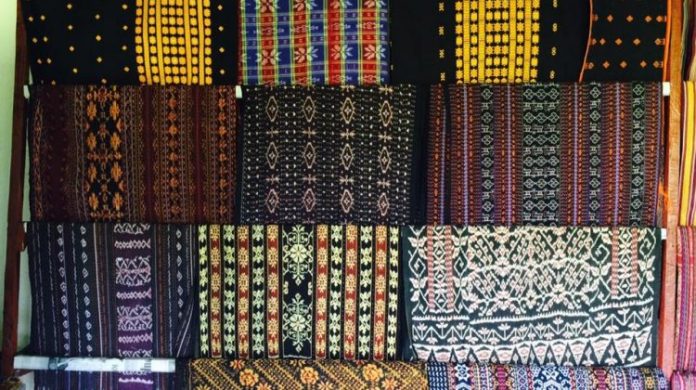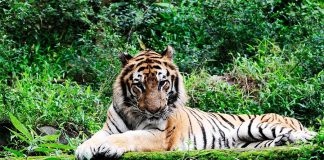Clothing and textiles are one way to represent a culture. With just a look, one can guess where the clothing and textiles come from. It is also a way to proudly show the culture’s identity to the foreign world. For that reason, these traditional fabrics from Flores are not just pieces of cloth but rather a heritage to protect and a way to show off Flores’ identity to the international society.
Flores’ ikat textiles are deeply embedded into their culture. In fact, it is one of the things that Flores is most known for. But besides its notability in the international society, its significance in the culture cannot be missed for it takes skill, patience and time into making their textiles. A girl will not be ready to marry if she does not possess the skills to weave ikat textiles.
Other than the intricacies of making an ikat, another important factor that differentiates it from other textiles are the use of local natural plant dyes. These are mainly indigo blue, mangrove bark for black, soga for brown, mango leaf for green and mengkudu (morinda citrifolia) root for all kinds of shades from deep red to pale apricot.
Here are the textiles found at Flores:
Lawo Butu
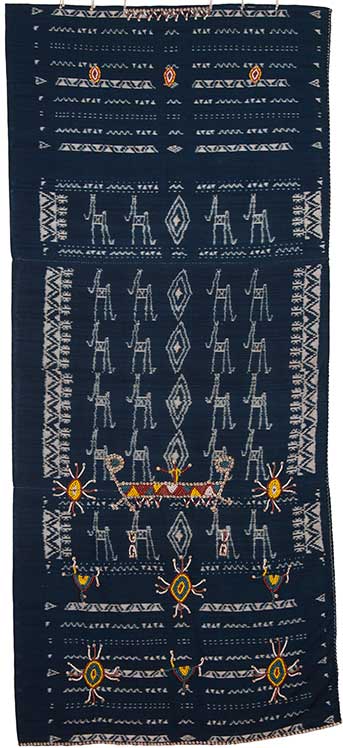
Depending on the cloth’s motif size, type and quality, there are a total of ten grades for cloths in Bajawa region of Flores. Before being a master, the weaver must slowly progress from the easiest grade to more higher-grade textile. Lawo butu is the highest grade, so only a few weavers are qualified to make them.
Lawo butu skirts are especially sacred in Ngada culture in which some have been preserved by the clan treasuries for over 200 years. Antique lawo butu are considered to be priceless since new ones are so rare. The clothing piece is worn by a female elder to the dedication of a new clan shrine. But if it is in tatters, the elder simply lays it across the shrine’s main post for the consecration. Not only are these pieces sacred, but it is also a style inspiration for modern weavers who replicate traditional clan motifs like the beaded boat, tadpoles, octopi, and water-boatmen on this piece.
Manu Atabian
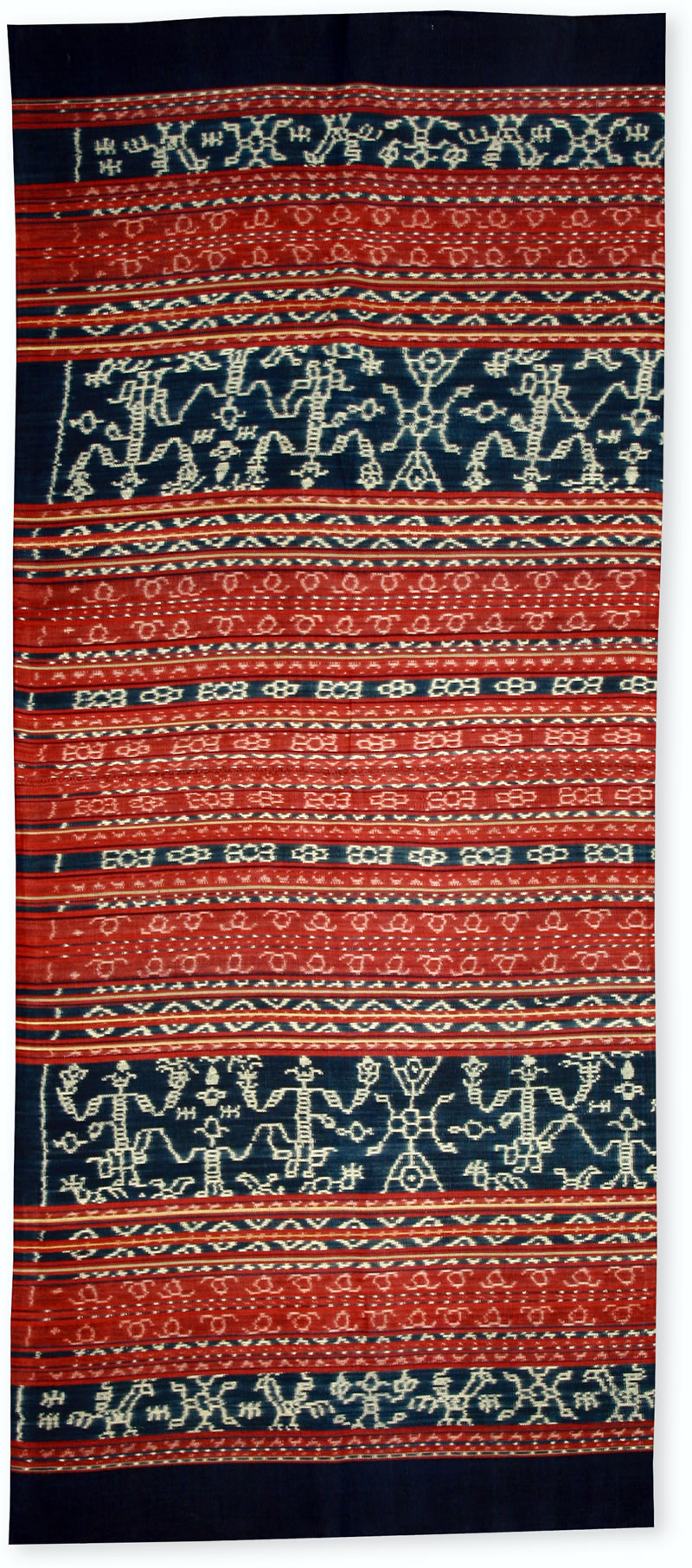
Preserving weaving knowledge takes work. Every process from complex dye preparations, weaving techniques, and the meanings of ancient clan motifs are all passed down orally. In some cases, it is not passed down at all, making it impossible knowledge to recover.
The matu atabian motif is a cultural heritage of the Sikka Krowe people of Watublapi village, in which many are working hard to maintain their cultural continuity and are carefully recording the meanings of ancestral motifs. In Sikka language, manu means chicken and atabian refers to the ancestors, who are represented guarding the hens in the broad blue bands of a tubular skirt. All in all, manu atabian symbolizes the ancestors’ ability for protection and prosperity and is one of the oldest motifs used by the Sikka Krowe. A textile with these motifs would generally be used in a ritual exchange of gifts at a traditional wedding.
Lea Ramu
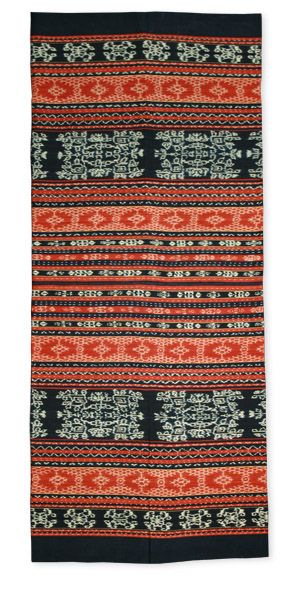
Textiles from Sikka regency of Flores, near the coastal city of Maumere have one of the best textiles. Interestingly, the tradition of Sikka people of exchanging these valuable clothes for goods and items like food, animals, machinery at local markets are still a widespread practice.
Large, bold motifs on the tube-shaped skirt shows that the woman who wears it is unmarried. The clearer the colors of the motif, the more valued it is. The value of this clothing piece is not to be missed, for Sikka women advertise their rare weaving abilities, including their desirability as marriage partners through the textiles they make. The traditional method of natural dyes are still followed by some of the weavers using secret family recipes. Lea ramu is a motif that depicts the leaves and flowers of a local plant, which weavers used to deepen their blue indigo dye to midnight black.
Semba
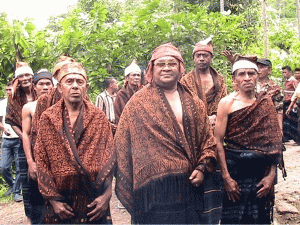
Onelako is part of the greater Ndona region, which circles the city of Ende on the south central coast of Flores. Ndona textiles usually feature deep and a variety of shades of red, which took weeks of dyeing and re-dyeing to produce.
Semba is a special cloth, for it is used by the community leader or ‘mosalaki’ over their shoulder during special occasions. The mosalaki refer to those who have authority over land use within traditional communities. Besides the mosalaki, semba is also worn on the shoulders by dancers. Both the style of cloth and its motif is the semba, meaning “’gathering to journey together.” Weavers who work on this piece of cloth are called the Bou Sama Sama, or “gathering together”. What is more interesting is that this group of people are people of different religions such as Christians and Muslims, many with common ancestors, work together regardless of religious boundaries.
Kreot Beloge
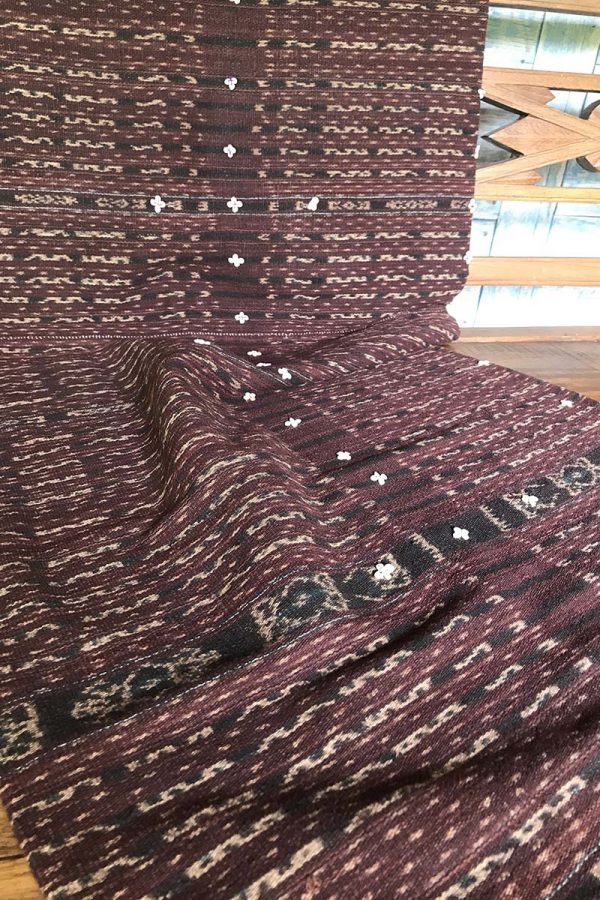
Other than being weavers, the people living under the Ile Mandiri mountain on the eastern tip of Flores are also basketry artisans as well as being farmers. This two-part women’s tubular sarong that is decorated with shells is called the Kreot Beloge.
Amongst other cloths, it is the most highly regarded bridewealth gift exchange at marriage to the people of Demun Pagong. The base of the color is red, with bands of ikat patterning at the head and foot and is decorated with small shells sewn onto the cloth. The motif is called pakete. Interestingly, the process of making it is a two-person process. Tying of the textiles and dyeing are done by the grandmother, while weaving is left to the granddaughter. This continues for generations, thus ensuring the art will not go missing.
Senai
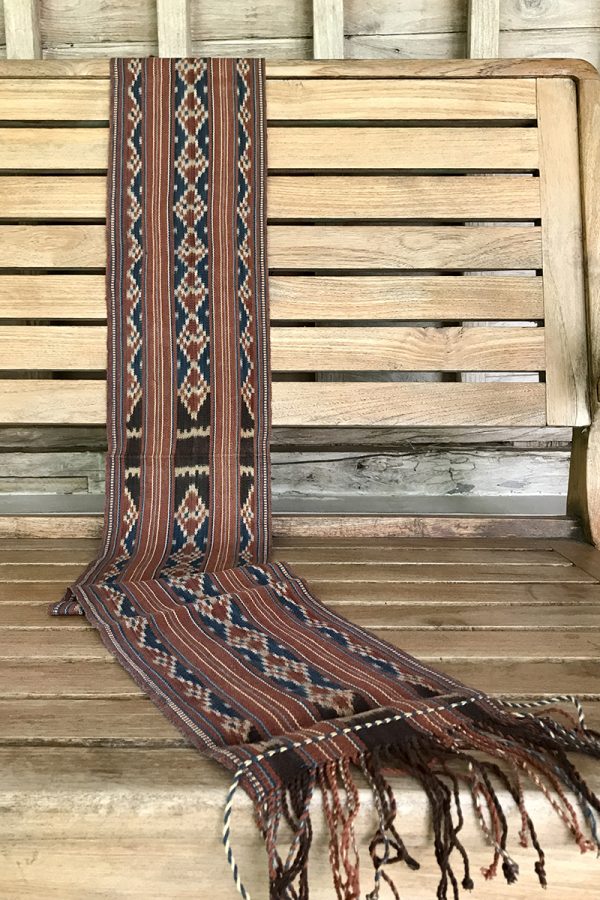
Senai is known to be a shoulder cloth during festivals and ceremonies for the men in Ndona, near Ende in central Flores. The motif on the senai is called mata rota rote, in which Mata means motif and rote is a large forest vine which the people tie into ropes. The belief is that the gods climb between the earth and the spirit world on a ladder made of rotevines.
On another hand, the Ende-Lio ethnic group uses Senai on the shoulder by women in Ndoa, Flores for special ceremonies. Almost all women weavers can make Luka or Senai scarves, but the motifs vary according to each region. The area of Nangapanda sub-district, Ndona sub-district, Ende city and its surroundings named Senai because it consists of one sheet. Whereas in the Lio area it calls it Luka because it is used by men. The base color is black from indigo. This shawl is usually worn during the Wanda Pa’u (mass dance) and the typical dance of the Ende Lio region on official occasions.
Onelako village weavers also belong to a cooperative called Bou Sama Sama, or “gathering together”. Making a textile is a collaborative expert, as each person specializes in one specific task like tying, dyeing of weaving. The group`s dyers colored and re-colored the threads in a senai for weeks to produce deep and varied shades of red.
Lawo Singi One
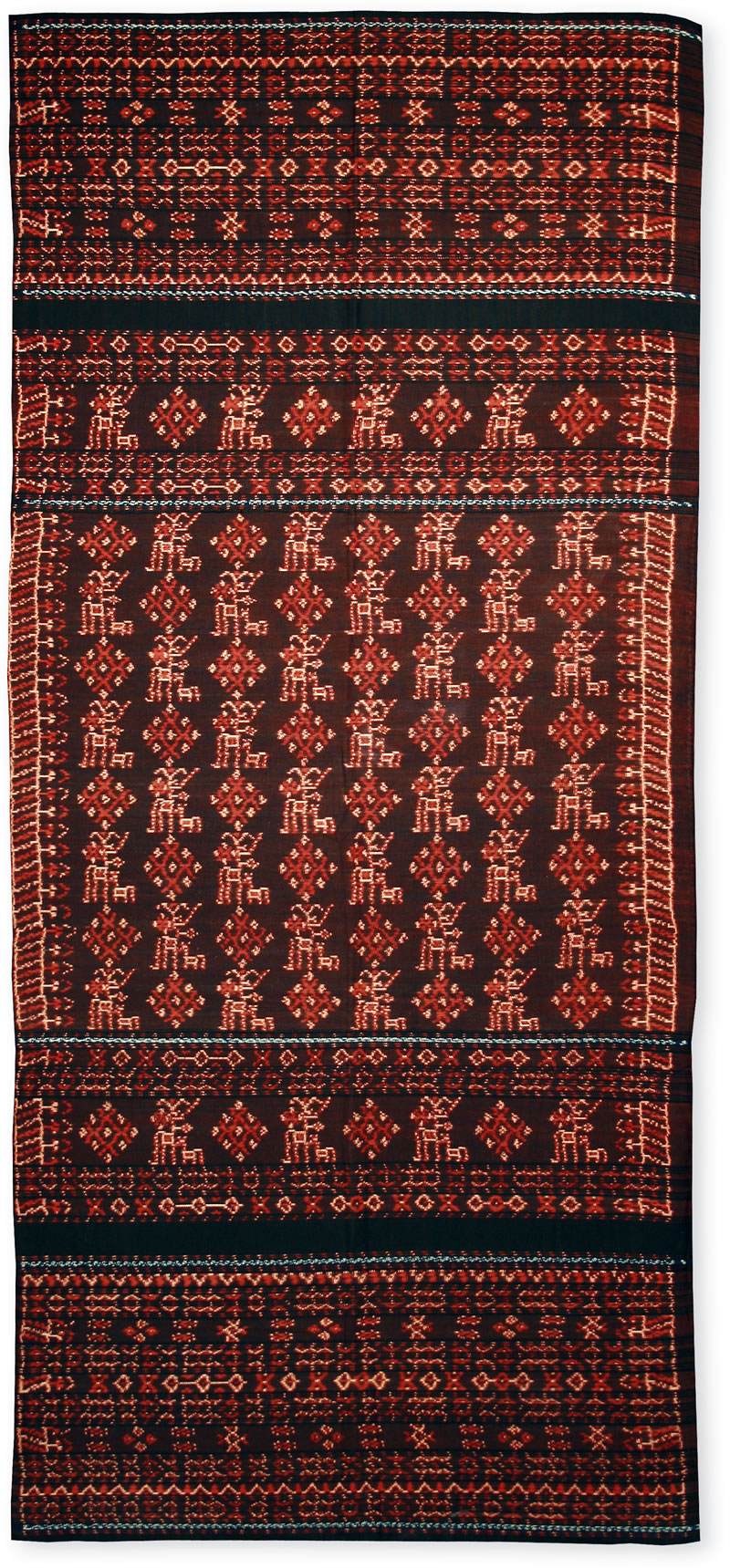
The Lio people are one of the island’s five major ethnic groups, living in the hills above the city of Ende, a city on the south central coast of Flores. In the Lio language, tube-shaped skirts are called lawo. If it contains bands at the head and foot of the central panel, it is called the lawo singi one.
The bands of a lawo singi one contain complex, coded cultural information and is always the first part to completed while making the lawo. The image of stylized elephants and eight-petal flowers in the central panel was inspired by Indian patola textiles which reached Flores during the past. There are numerous legends related to the lawo singi one. Locals across the southern islands held a belief that it had magical powers to unravel and reform with the waning and waxing of the moon.
Lawo
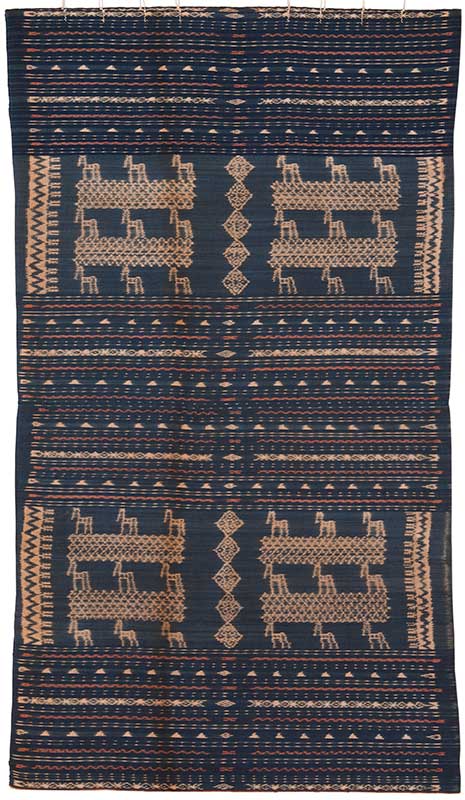
The story of Lawo textiles begins with Leonardus Wou Kurry. He was a cultural enthusiast, committed to reviving stories and myths related to Bajawan textiles. While on his adventures to an area of Ngada called Lopijo, he spoke to weavers and cultural leaders. So inspired was he by the weaving done there, that he integrated the buku tewu pattern into the lawo women’s sarong the moment he reached his own village.
In total, Leonardus prepared eighty synthetic dyed textiles with this motif for dancers to wear during the planting ceremony (reba). It was not long after that Leonardus became ill and would not get better despite going to several doctors. He then went to a paranormal who told him his sickness was because he used a motif from Lopijo without permission. So he completed the lawo textile after which a purification ceremony (kelanino) was performed to purify him as well as gaining the blessings from the ancestor. This successfully restored his health.
Lawo Kapa
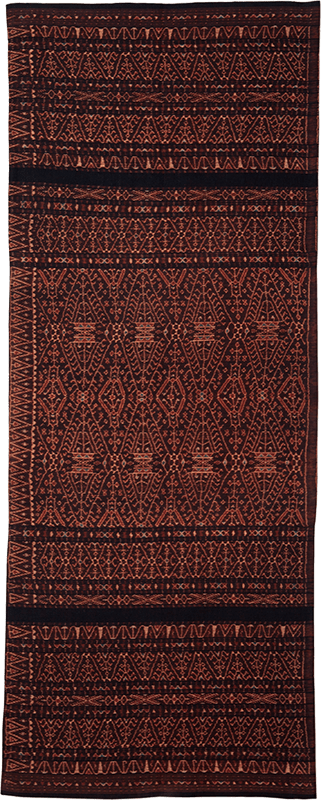
Lawo kapa is a three-part textile that is sewn into a tube and worn by women in the village of Nggela. This textile is considered to be a new creation, despite being made seven to eight generations ago. Kapa means ship and can be called lawo kapa ria as a large ship or kapa lo’o as a small ship.
Lawo Kunake
Lawo Kunake from Nggela, Flores is named not for its motif but rather that the pattern fills the whole cloth without borders or separating stripes.
Lawo Jara Nggaja
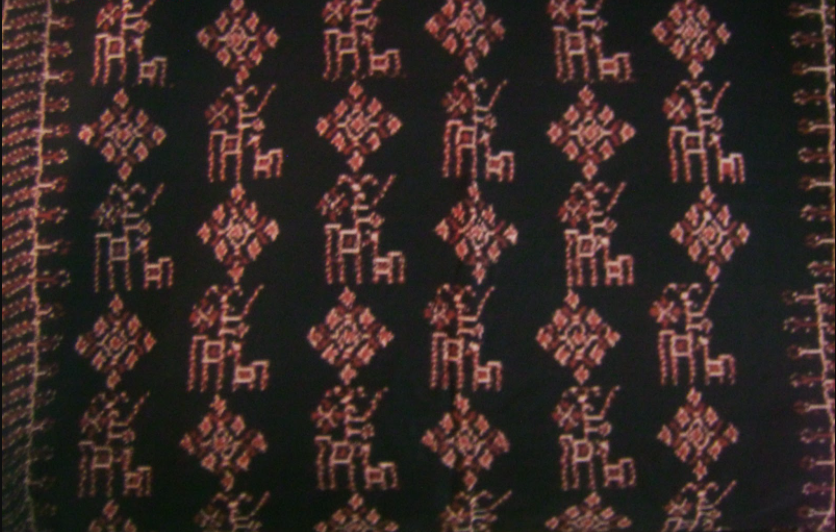
Lawo Jara Nggaja comes from Lio in the village of Ndona. The name Lawo Jara Nggaja is given according to his name or the name of the Lawo motif, namely “Jara Nggaja“. The base color is black from indigo. This sarong is an oversized garment for the wives of the traditional elders (Mosa Laki) around the production site and is worn during traditional ceremonies. What needs to be considered is the method to wearing this sarong, which must be in the same direction as the standing Jara Nggaja motif. The meaning of Jara Nggaja is Horse and Elephant.
Lawo Pundi
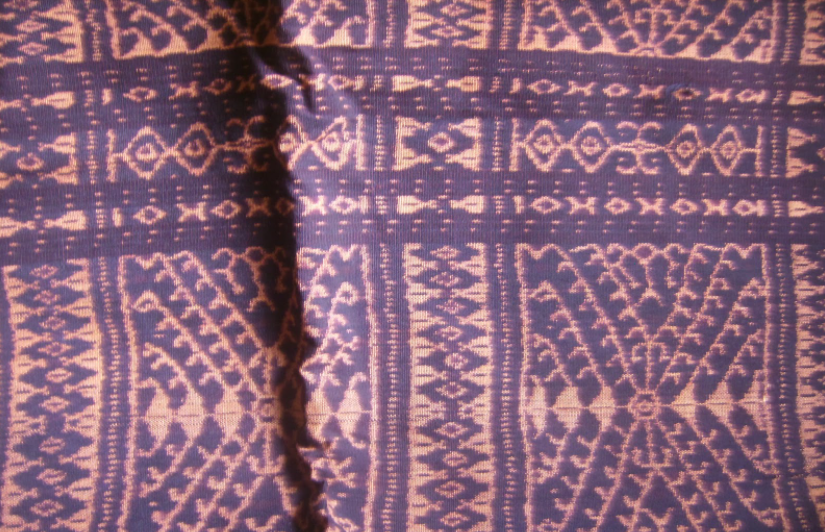
The motifs of Lawo Pundi are those of insects and reptiles, where the motifs are rarely found in Ende City. The base color is black from indigo. The Lawo Pundi motif is made based on the imitation of the beads in the coffers in ancient times so that the Lawo Pundi has a rectangular pattern like a pundi with butu seke. Besides being used by Mosa Laki‘s wives and traditional elders in Nggela, Lawo pundi is also worn by girls of Mosa Laki‘s descent to dance the Mure dance.
Lawo Soke
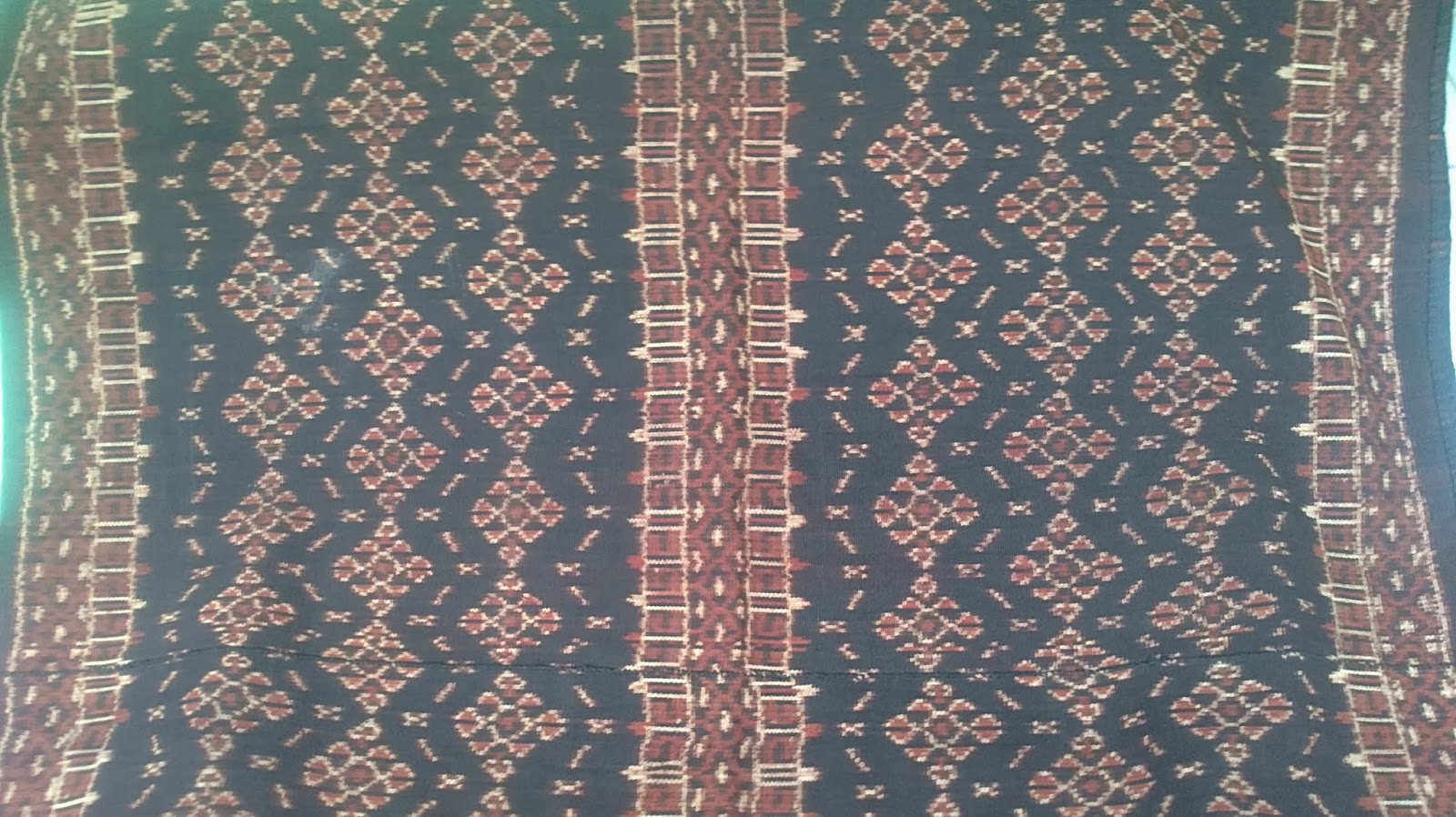
The Soke motif from Ende is made based on imitating breadfruit or wunu tere leaves that stand and stick to lawo and the word soke which means sticking. Because of the imitation to standing breadfruit leaves, people call this type of lawo namely lawo soke. There are two types of Lawo Soke, as Lawo Soke Mata Ria has bigger motifs and Lawo Soke Mata Lo’o is a smaller motif. Nevertheless, the base color is black from indigo. The motifs on this lawo include the mata gami lima and the gami telu which look like the wings of a fly, which people call soke bele kale. Types of soke and soke bele kale sarongs are usually used as sarong or lawo for the bride around the location where they are made.
Lawo Nepa Mite
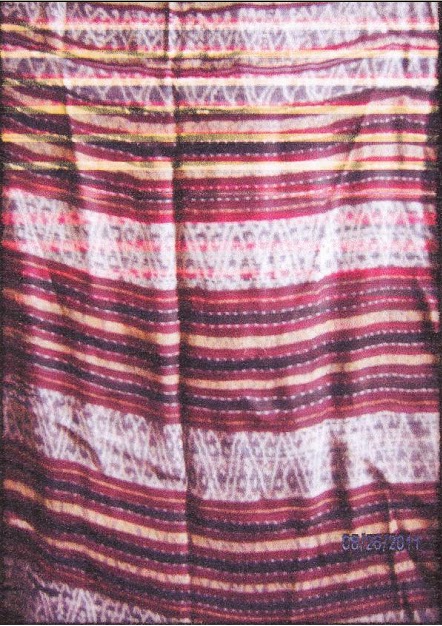
In ancient times there have been cultural exchanges between kingdoms in the world and high-ranking Flores officials, especially in Ende-Lio. No wonder Ende-Lio has Nepalese motifs. The name Lawo Nepa Mite was because motif itself comes from Nepal and the color of the motif is black and white or black patchouli (nggili). Lawo Nepa Mite with Lambu Mite Mina is commonly used by Mosalaki mothers during traditional ceremonies and other rituals. And this type of sarong is rarely used by girls, except for Lawo Nepa Te’a or the main motif is colored red or with yellow thread.
Lawo Nepa Te’a
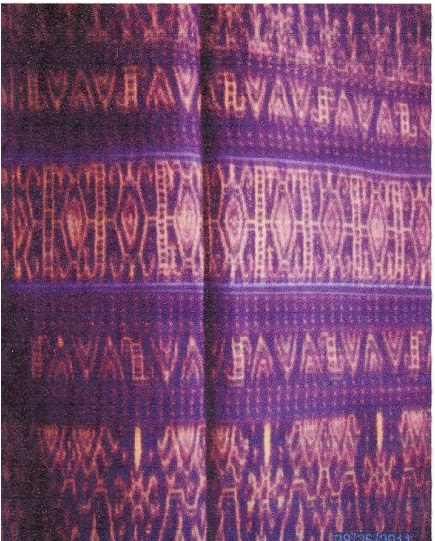
Lawo Nepa Te’a is a developed version of Lawo Nepa Mite because all the motifs are all the same. The difference is only in the main motif which is given a red color or the basic material uses yellow thread. Lawo Nepa Te’a also means lawo nepa which means yellow. This sarong is commonly used by women, both mothers and girls at any occasion for the people of Ende-Lio.
Omembulu Telu
Among the Lio sub-ethnic groups, there is a rare motif called Omembulu telu (three gold). According to local people’s beliefs, this woven motif can make the owner rich.
Rajo
This textile comes from Lio, Flores. The Rajo motif tells of an ancestor ship “Rajo” from India Malacca journeying from India Malacca to Ende. Rajo is a boat and in Rajo there are wea or gold and riti or gold earrings commonly worn by Lio ethnic mothers. Meanwhile the wea is worn by old men (mosalaki) who are hung from the neck.
Lipa
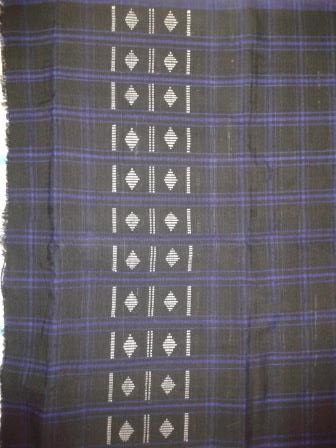
Lipa is sarong specifically used for men in Maumere, Flores. There are mainly two types of sarongs for men, one being lipa merak matan pitu which is a simple striped textile and another the lipa merak loen peten which is predominantly red and contains a weft ikat motif. The word lipa most likely comes from the Indonesian word lipat which means “to fold” and is a reference to the checkered, folded sarong textiles made in Sulawesi and sold throughout Indonesia.
Lu’e

Another traditional shoulder cloth for men is called Lu’e. Usually, it has very subtle bands of white ikat dashes and often horse motifs on the bands of the cloth. Typical Ngadha textiles are dyed all dark blue.
Keru

Keru is the belt worn by men of Bajawa as part of their traditional dress. It is usually beaded or woven with small ikat patterning of horses. It’s dyed to a shade of dark blue black, which is typical of Ngadha textiles.

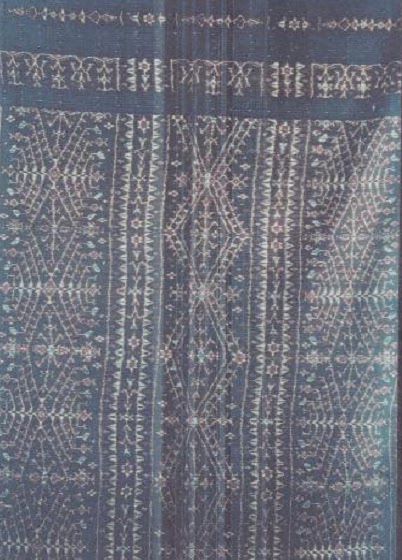
Originating from Ende-Lio, the Lawo Manu motif is based on imitating a Chicken where the word Manu means Chicken. The motifs are mata gami lima and gami telu, which look like chicken wings. This sarong is usually used as a sarong or lawo for the bride around the location where it is made.
Lawo Mata Rote
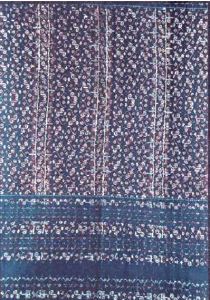
This textile is also a cloth made in Ende-Lio. In particular, Lawo Mata Rote is the updated version of Gami Tere Esa because all the motifs are the same. The latest change is that the main motif is made with yellow colored thread. This contributes to the name, where Lawo Mata Rote means a small white and yellow motif. This sarong is commonly used by all groups, both mothers and girls for traditional events and other events.
Lawo Mberhe Arhe (Bele kale)
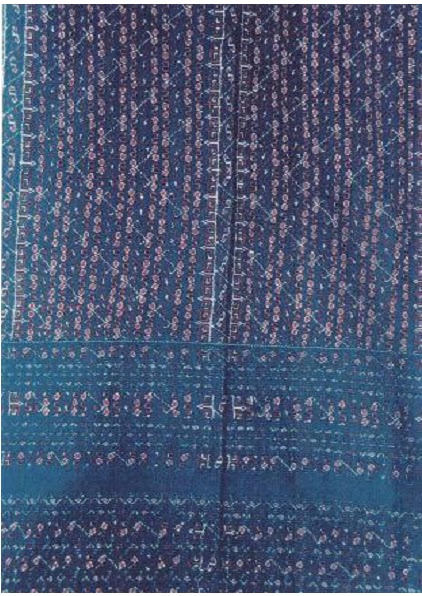
Lawo Mberhe Arhe is worn by the Ende-Lio ethnic group. Bele Kale means the wings of a fly. This sarong can be made by almost all ikat craftsmen and only the motifs vary according to each region. Usually, this sarong is worn during traditional ceremonies or religious events, both official and informal.
Lawo Mata Anggo
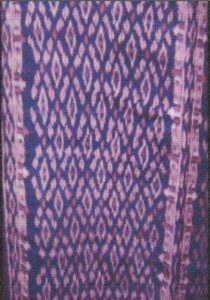
Mata Anggo’s Lawo motif is actually taken or imitates a batik motif, named Kae Anggo by the people of Ende-Lio. There is also a combination of batik motifs with traditional basic motifs such as Seke Bele Kale or Soke Mata Lo’o with 5 (five) gami. This sarong is actually a combination of the batik motif and the traditional ikat motif in Ende district and is still considered new. The base color is black from indigo. This sarong is worn during family events and other events, both official and unofficial.
Lawo One Mesa
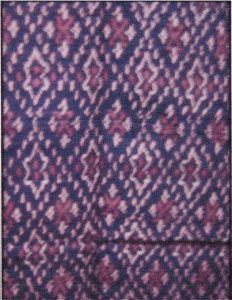
Lawo One Mesa or Lawo Mboko Wea or Lawo Sue gets its name because the one who made this motif for the first time was Mrs. Theresia Sue (late) from Ndona, who was the generation before Indonesia’s independence. This sarong is in the form of a Kopo eye and the center is filled with Mboko Wea motifs or motifs that are interconnected with each sheet. Its called Lawo One Mesa because the three sheets had the same motif and this type of sarong was rather complicated to make. The base color is black from indigo. This sarong is usually used as a bride’s sarong. This sarong is extremely rare because it is passed down for each generation. This type of lawo has now developed into various types of motifs but the pattern remains the same as the original and has even become the basic motif.
Lawo Pea Kanga
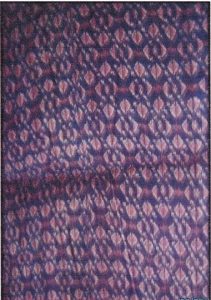
Lawo Pea consists of 2 (two) types, namely ordinary Pea and Pea Kanga because there is an addition of a kanga or finger motif in the middle of the motif. Some say that the name of this sarong is taken from the name of the first maker of this sarong motif, Ine Pea. There are also those who say Pea is Pi’a or cut on the Lawo Pea motif so that the meaning of the name of the sarong is cut. The base color is black from indigo.
This sarong is worn during family or religious events as well as for Wai Laki or to give to relatives at traditional events. A belief is held by the people of Ende-Lio that this sarong should not be worn by girls because it is believed that the girl will find it difficult to find a mate. This is because in accordance with the meaning of the sarong, that is, the soul mate is always cut away by someone else.
Lawo Jara
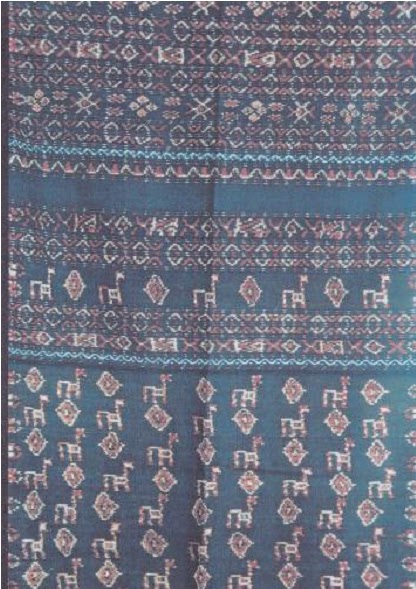
The name of this sarong is in accordance with the shape of the motif, namely jara or horse and to add to the motif between the horses, the saliwu eye motif is added. The base color is black from indigo. Jara motif present in this textile is actually part of the lawo jara nggaja motif, only the number of gamis is slightly different. This sarong is used by women during family and religious events in Ende-Lio and the way to wear it must be in accordance with the standing horse motif so that it does not turn over.
Nggaja
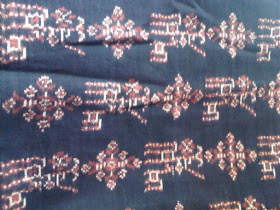
The Nggaja motif in the form of an elephant animal describes the life of the Malacca Indian gods who came to Ende. Whether there is an elephant animal or not in Ende, in general Hindus who are partially adhered to by the Indian nation make elephants a symbol of Lord Ganesha, the patron god of science.
The nggaja motif is commonly used for mourning death and to fulfill marriage invitations. When mourning the cloth must be worn upside down. The elephant’s head should face down.
Lawo Gami Tera Esa
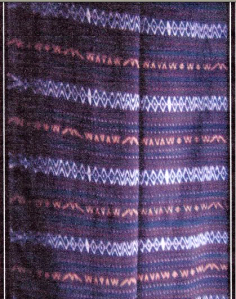
The name of this sarong is adjusted according to its manufacture, namely each motif has 9 (nine) gami or nine thread ties, so people call it Lawo Gami Tera Esa. The base color is black from indigo. Of each type of lawo, this sarong is the simplest way to make it and not as complicated as other types of sarong. Actually this sarong motif is taken from the lawo kelimara motif and this sarong is very popular with the girls of Ende and its surroundings. This sarong is worn at any time, especially the girls use this sarong as a mass dance outfit, because it is easy to obtain when needed.
Lawo Mata sinde
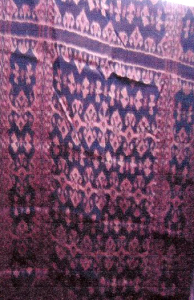
This sarong motif actually mimics the motif of one of the smallest sized sinde shawls to be used as a men’s belt or headband. This type of sinde shawl is now almost extinct because people rarely make it. The base color is black from indigo. The sinde eye motif is found on the first sheet or on the middle, while at the bottom of the foot, the motif is almost the same as the motif from lawo kelimara. To accompany the mata sinde motif, there are 2 (two) motifs from lawo nepa te’a metu and other motifs from the sarong. This type of sarong is usually used by mothers and girls of Ende-Lio at traditional and religious ceremonies.
Lawo Kelimara
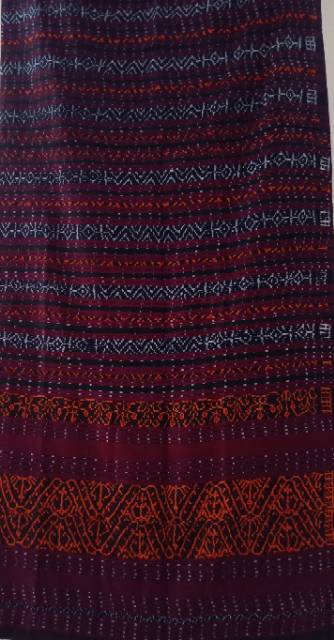
Kelimara is a lawo or sarong with a mountain motif, which gives life to mankind from The Creator. The base color is black from indigo. The name of the sarong is adapted to the shape of the motif on the sarong. The uniqueness of this sarong is that the main motif lies on the side of the sarong, the outer sheet of the sarong or on the feet when worn. Whereas on the other parts of the sheet the motif is in the form of Gami tera esa. This sarong is used as a sarong for the bride and is also used by mosalaki mothers during traditional ceremonies in Ende-Lio.
Lawo Kelimara consists of 2 types of motifs, namely:
The motif is in the form of a towering mountain. There is also a small mountain in the middle of the motif and the top is shaped like a traditional house.
Lawo Kelimara with the main motif found on both sides of the lawo with 9 (nine) Gami tera esa motifs and 2 (two) Teo timbu motifs.
Lawo mangga
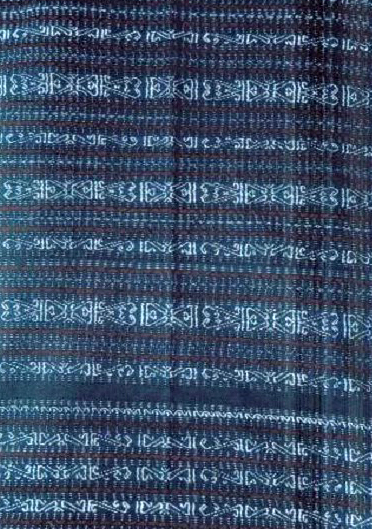
The base color is black from indigo. It is called Lawo Mangga or Maga because the motif is like a bamboo cross on a fence, while the shape of the motif is fishing nets (Mata Ndala) and Bhuja (fish tail fin). This sarong is commonly worn as everyday clothes by mothers and girls of Ende-Lio.
Kreot Mowak Miten
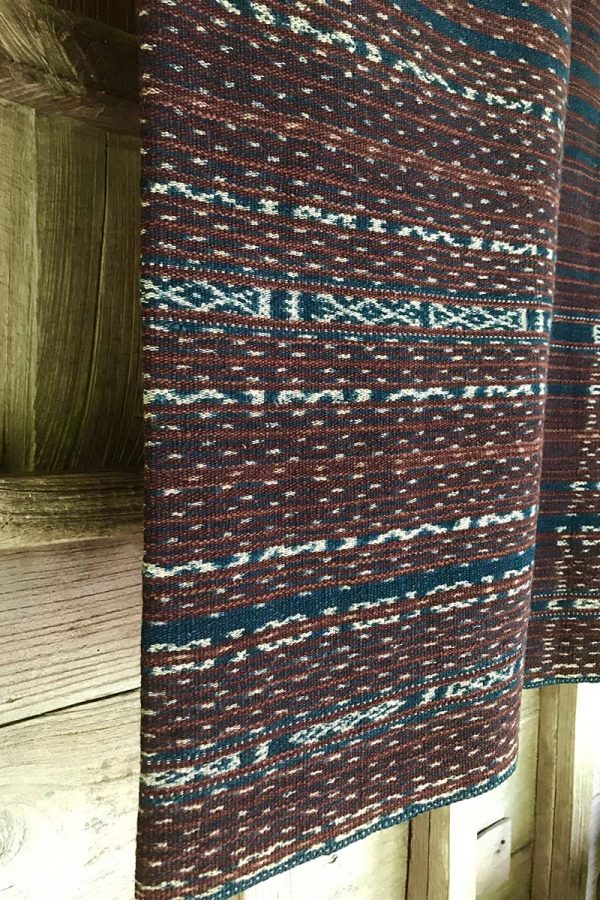
The Kreot mowak miten is a two-part ceremonial woman’s sarong from Eastern Flores. It is usually made with small ikat patterns with a blue-black (miten) background, paired with red kreot beloge textile that has the shells sewn on to it. The main purpose of this textile is to be used as the ritual gift exchange at marriage.
Utan Hawatan
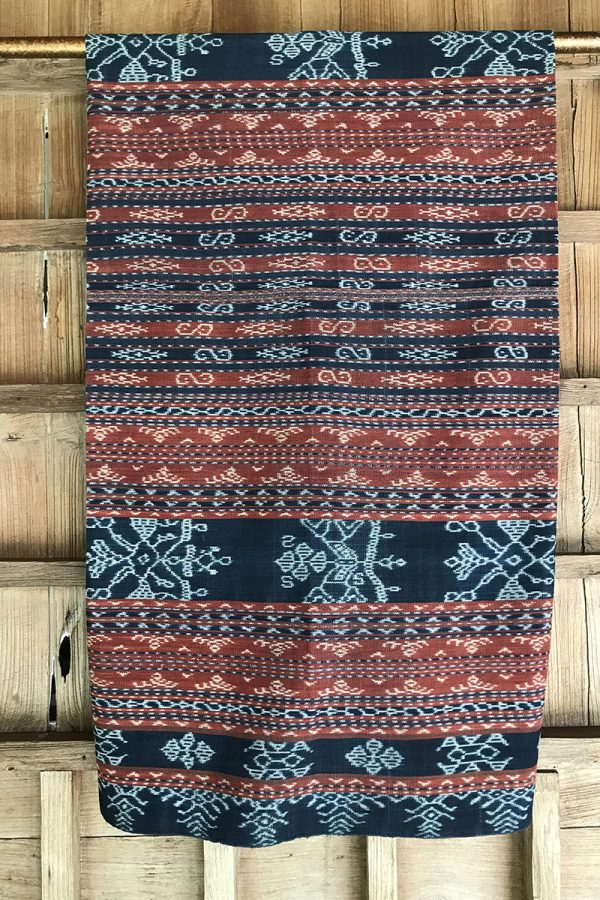
This two-part woman’s tubular sarong from Sikka Flores is called a utan hawatan and symbolizes fertility. It also contains an inherent agreement that the woman and her family will be respected and honored by the man’s family. Usually, an utan hawatan would be worn by a young woman during her child bearing years.
Utan Wiri Wanan

Utan wiri wanan is a woman’s four-part tubular sarong from Sikka Flores. It is usually used at weddings during a ritual called roa muu, where a young man from the groom’s family will dance around a banana tree. On it, utan wiri wanan is hung. He will slowly circle and cut down the tree, capturing the sarong in the process. This ritual symbolises fertility.
Endek
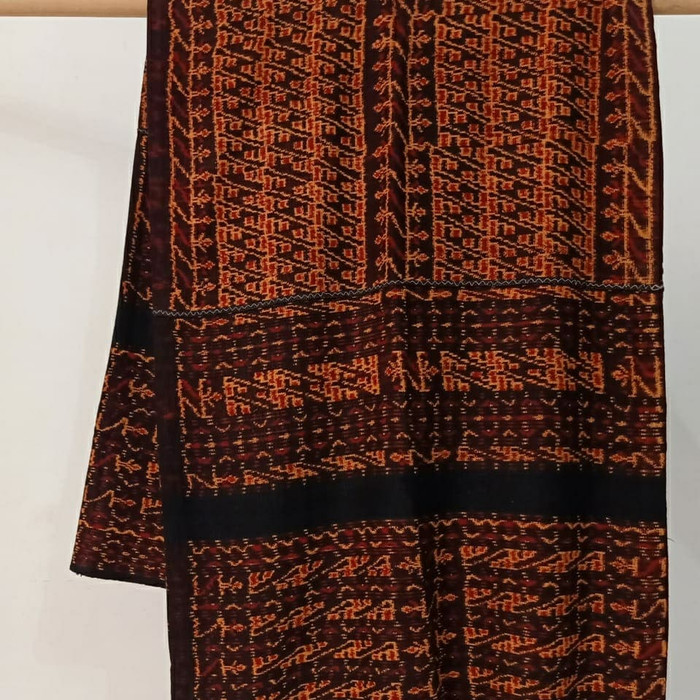
Ende textile comes from the region of Ende, Flores. Although its popularity is beginning to wane due to globalization, many are still making the effort to resurge its popularity. This textile is also very special for it has a quality that differentiates it from other textiles. It is usually made in dark colors with small, delicate motifs. Weavers usually find inspiration from nature such as animals, traditional items, corn, rice grains and gold.
Songke Manggarai
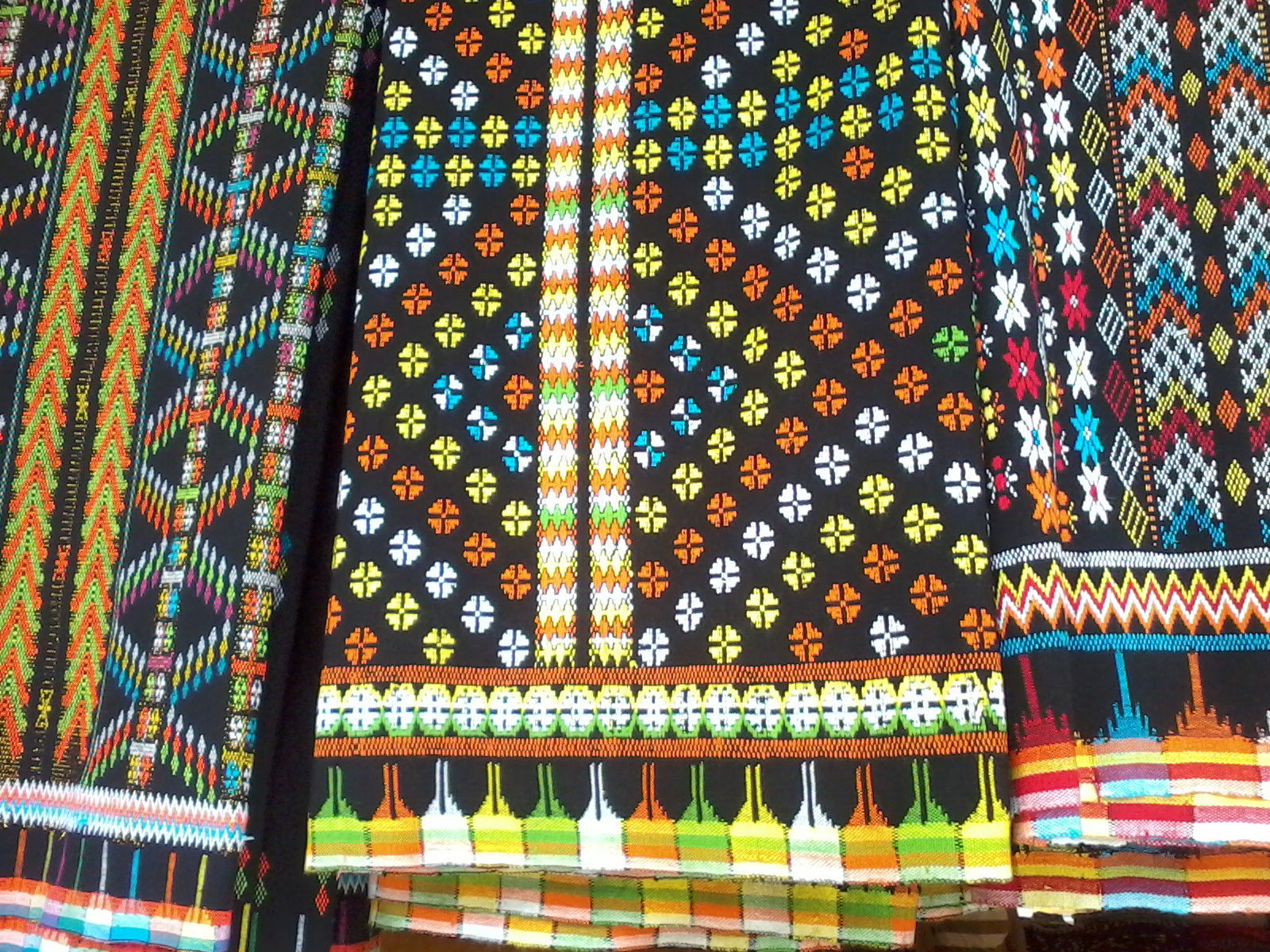
Songke Manggarai comes from Manggarai, West of Flores. It is also one of the forms of art that is beginning to be lost, which is why the government has also made effort to re-introduce it to youngsters so the art could be revived. The textile bears the mark of Flores textiles with dark backgrounds and designs inspired by nature. The embroidery is also special as it represents how the people of Manggarai is fused with nature and God.

